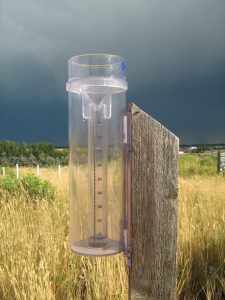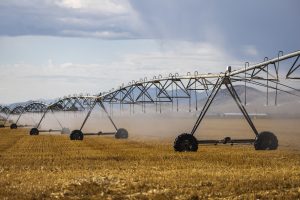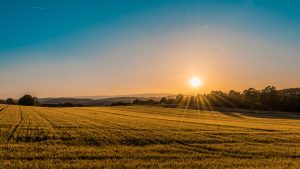Climate Matters: The CoCoRaHS Rain Gauge Network and a Tale of Two Hydrologic Extremes
On November 14-15, 2021, 4.67” of rain fell at Bellingham International Airport, setting a new record for that location. This storm brought with it the most devastating flood that Whatcom County has seen in decades.
Read moreClimate Matters: Water Year 2025 in Review
Water year 2025 is complete, and it’s time to take a look back and see how WA stacked up historically. The 2025 water year includes the 12 months from October 1, 2024 through September 30, 2025, as opposed to the usual calendar year.
Read moreThe Fifth Pacific Northwest Water Year 2024 Impacts Assessment
The fifth Pacific Northwest (PNW) Water Year Impacts Assessment, released in March, chronicles the water year, its impacts, and how people responded across Washington, Oregon, and Idaho during the 2024 water year (October 1, 2023-September 30, 2024).
Read moreSee More Drought with C-MOR Drought Reporting
The Condition Monitoring Observer Reports on Drought (CMOR-Drought) is a collaborative effort by the National Drought Mitigation Center (NDMC), USDA Climate Hubs, and NOAA National Integrated Drought Information Systems (NIDIS) to document drought impacts across the nation since 2018.
Read moreFourth PNW Water Year Impacts Assessment Released
The fourth Pacific Northwest (PNW) Water Year Impacts Assessment, released in March, is a collaborative effort between water managers and scientists at the Office of the Washington State Climatologist, the Climate Impacts Group, Oregon Climate Service, Idaho Department of Water Resources, and the NOAA National Integrated Drought Information System (NIDIS).
Read moreComparative Analysis of Soil Moisture Products in WA
Soil moisture is becoming an increasingly important parameter in drought indication. However, collecting soil moisture data on a large scale is not easy, due to the multitude of soil properties and environmental factors affecting water accumulation and drainage in soils.
Read moreAridity Index – Columbia Basin Time Series
Readers of this newsletter know that the Columbia Basin of Washington state is a dry region due to the shadowing of precipitation by the Cascade Mountains. Perhaps less appreciated is that this effect is actually a bit more pronounced in summer than in winter.
Read morePotential Evapotranspiration: Extreme Days in Eastern WA
This piece represents a follow-on to previous work focusing on summer seasonal mean trends in potential evapotranspiration (pET) in eastern Washington state (Bond and Bumbaco 2015). Our primary objective is to show how yearly counts of high pET days have varied since the late 1980s.
Read moreSoil Moisture Contents in Washington State
As the readers of this newsletter are well aware, and for that matter everyone that was paying any kind of attention, the wet season last fall got a late start. Moreover, almost all of Washington state has received less precipitation than normal since the beginning of the calendar year, with the exception being a small region in the central portion of the state near the Columbia River.
Read morePNW Water Year 2022 Impacts Assessment
The Pacific Northwest (PNW) Water Year 2022 Impacts Assessment is now available! Funded by the NOAA National Integrated Drought Information System, and produced through a collaboration of regional entities, this assessment summarizes the water year conditions and related impacts and responses by different sectors.
Read more


